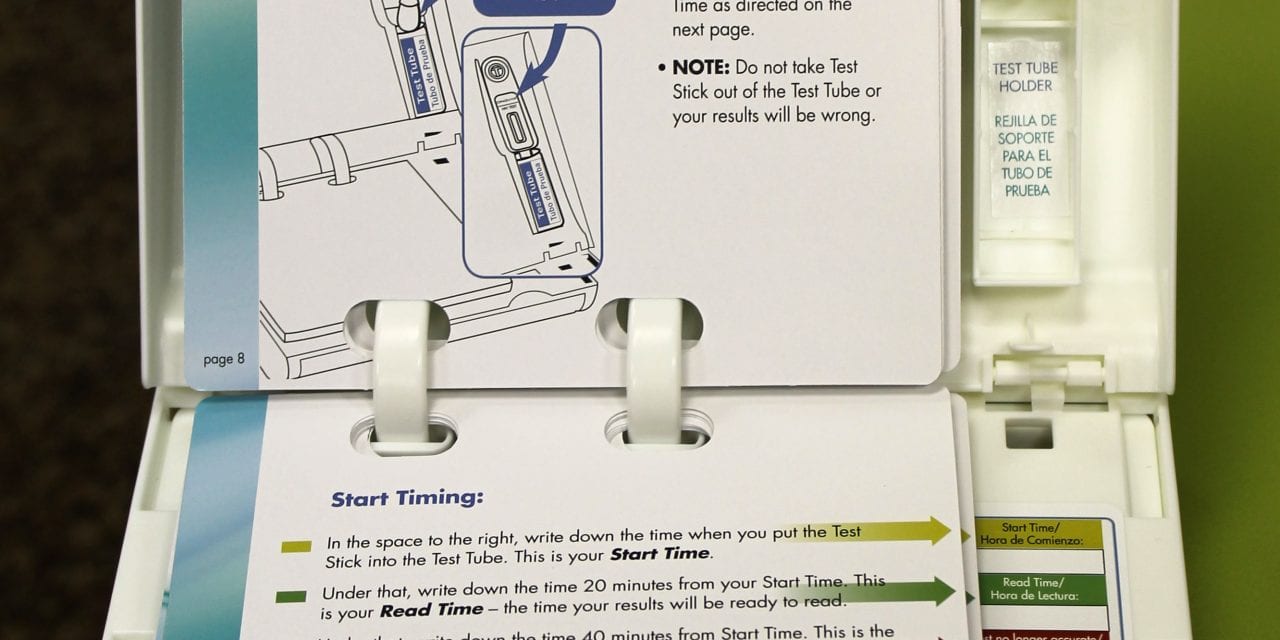Orasure’s new in-home OraQuick HIV test is now available in stores.
The test can detect HIV beginning three months after contact. Using it earlier than three months after a “risk event” may not produce an accurate result. Other rapid tests that can detect the virus within a few days of contact are still only available through a doctor or HIV testing facility such as the Nelson-Tebedo Clinic or the Dallas County Health Department.
Ron Ticho, Orasure’s senior vice president for corporate communications, said this is the same test doctors and other testing facilities have used for 10 years. With more than 25 million tests done, OraQuick is more than 99 percent accurate, he said.
Since receiving approval to offer a home test kit in July, OraSure has trained phone counselors to answer questions and developed and revised its instructional material that comes with the test kit.
“We took some time to develop a test kit the consumer could use,” Ticho said.
He said the kits went through two tests — observed and unobserved. In the observed test, the company watched people open the package and test themselves as they followed the instructions. In the unobserved test, people took the kit home.
The test comes in a box with step-by-step instructions in English and Spanish on a flip chart. On the box is a phone number to call to answer questions about whether to take the test, how to take the test or read results — and for support. If a test is positive, the written instructions say to get a confirmation test at a medical facility.
Raeline Nobles, executive director of AIDS Arms in Dallas, said her agency called the number on the box three times as a test.
“Each time, the person was knowledgeable, a good listener, well trained and professional,” Nobles said.
Nobles said that since an original draft of the instructions she saw, the information on the box and in the test kit have been revised.
“They kept it as simple as they could,” Nobles said. “A lot of folks told them that too much information could confuse and contaminate the results of the test. The instructions are a lot clearer now.”
She said when anyone calls the information number, they are given referrals to local AIDS organizations and counseling. In the calls made by AIDS Arms staff, the information and referrals were accurate, Nobles said.
In addition, Nobles said to prepare for the release of home HIV testing, her entire staff received additional training.
“We’ve trained everyone on our staff — what to tell people, what to do next,” she said.
With home testing, she said, anyone on her staff could be the first person someone talks to after receiving a positive test result.
Melissa Grove, executive director of Legacy Counseling Center, said she is contacting local pharmacies and leaving her card. She said she’d like a card given to each person who buys a test so they know where they can get any counseling help they may need if the test results are positive.
Ticho said a pharmacy education piece is going out and that will be followed by a physicians’ piece. With home testing, doctors in practices that never thought about HIV may be confronting the issue soon.
With a quarter million people infected with HIV who don’t know it, testing is important. Ticho said someone who knows he or she is infected “is less likely to spread HIV and will live a longer and healthier life.”


















